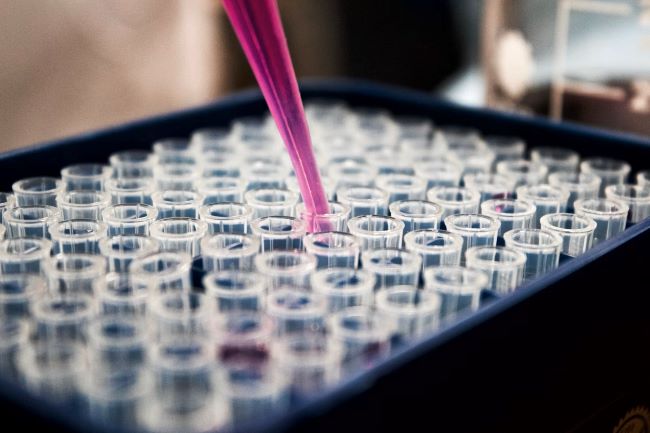Resources
Cytotoxicity and Cell Viability: The Big Picture

Determining cytotoxicity is a critical step in assessing the biocompatibility of medical devices, biomaterials, and drug screening. There are a wide variety of methods available to researchers; however, too often cell-based assay results indicating poor cell health without greater context slow down or halt progress on the development of a medical device.
Technology is constantly driving innovation in medical devices, and the methods necessary to evaluate their safety are evolving in parallel. A comprehensive approach is necessary to select an appropriate assay method and obtain a more complete picture of cellular health and keep a program moving forward.
Choosing the Right Assay
Sometimes, scientists may choose a particular assay simply because it is well-known and validated, without considering whether it is the best assay for their specific experiment. According to Fahimeh Tabatabaei, DDS, PhD, Study Director at iFyber, selecting the proper assay requires careful consideration of several factors.
“Relying solely on an assay such as lactate dehydrogenase (LDH) does not provide a complete picture of cellular health. For example, it does not indicate whether cells can recover from damage or whether they can still divide and grow. Some assays are better suited for detecting oxidative stress, while others are more sensitive to changes in mitochondrial function.
“By using multiple assays that target different aspects of cellular health within the same well, researchers can obtain more data and build a more comprehensive understanding of what is happening in the cells and how they respond to different types of stressors.” She points out that well-thought-out positive and negative controls are essential for each cell-based assay.
Fahimeh believes that the traditional MTT assay mentioned in ISO-10991-5 has severe limitations and can only be used for a single measurement rather than continuous monitoring of the same well, which means that researchers cannot observe the same set of cells to see if they can adjust to the material and proliferate after several days.
As Fahimeh notes, “When a method is destructive for cells, you cannot analyze cells for any other subsequent purpose. Non-destructive assays enable researchers to observe the long-term effects of different materials or treatments on cells and provide a more comprehensive understanding of cellular responses.”
A thorough understanding of the end product’s application is also key in designing assays. Fahimeh adds, “For studying cell viability, a defined time period extract assay can be useful, but considering the expected function of the product can help suggest more relevant assays. If the product is in direct contact with cells, a direct cell-based assay is appropriate, while an agar diffusion assay is more reasonable when there is a barrier between the product and cells.”

Evaluating Cytotoxicity Using 3D Cell Culture Models
Fahimeh emphasizes that evaluating cellular health is not just about individual cells but also the microenvironment in which those cells exist. The global push to reduce animal studies and discrepancies between in vitro and in vivo results highlight the importance of introducing 3D models in cell-based research. “2D culture plate-based assays are well-suited for biomaterials/drug screening when a wide range of samples needs to be analyzed due to their speed and simplicity, 3D in vitro and ex vivo formats are more suitable for exploring basic science questions when fewer groups are involved.
Studying cells in more complex environments can provide researchers with a better understanding of how cells respond to different stimuli and how their behavior is influenced by their surroundings.” However, Fahimeh cautions that these assays may be more expensive.
Fahimeh notes that iFyber’s expertise can go beyond just performing assays. They can assist in study design and interpretation, including selecting the appropriate cells and methods of interaction before choosing the assay. As cytotoxicity experiments are crucial for product regulation, she acknowledges that unexpected results may cause concern for clients.
To avoid going back and forth to figure out issues with the assay, Fahimeh suggests a POD approach, where a team of iFyber’s scientists with diverse skill sets can work with the client’s R&D team to provide a comprehensive evaluation of the cytotoxicity of the product; this allows for a smoother walk-through of the assay, tailored to the product.
To sum up, evaluating cytotoxicity requires a comprehensive approach that takes into account multiple factors such as assays, cell type, expected function, and 3D cell culture models. In vitro cytotoxicity failure is a concern that requires investigation to determine if there is a risk for in vivo cytotoxicity. However, a failure in vitro does not necessarily mean that a medical device is not biocompatible. A proper biological risk assessment can identify alternatives to defend the result and achieve successful submission.
Nevertheless, determining how to proceed in the event of a failure can be challenging. iFyber’s team has extensive experience in developing complex cell-based assays and a deep understanding of all regulatory recommendations, including ISO 10993 and the FDA’s guidance on using ISO 10993, which highlights areas of particular interest to the FDA. By taking a big-picture approach, iFyber develops more effective strategies to evaluate cellular health.

